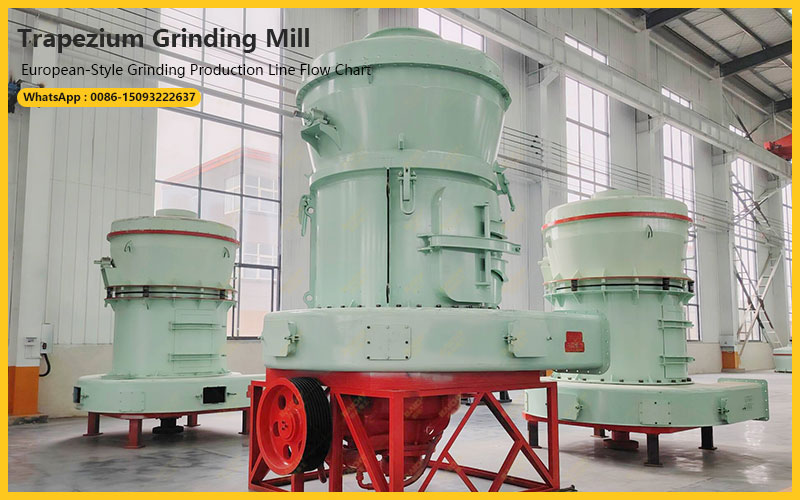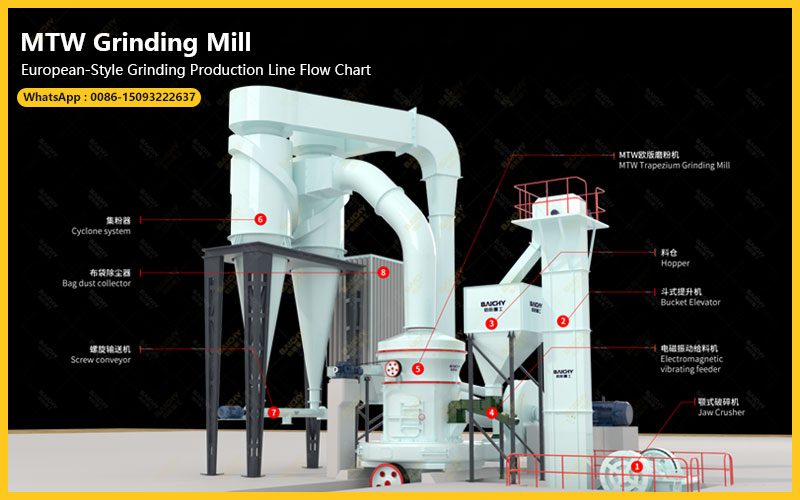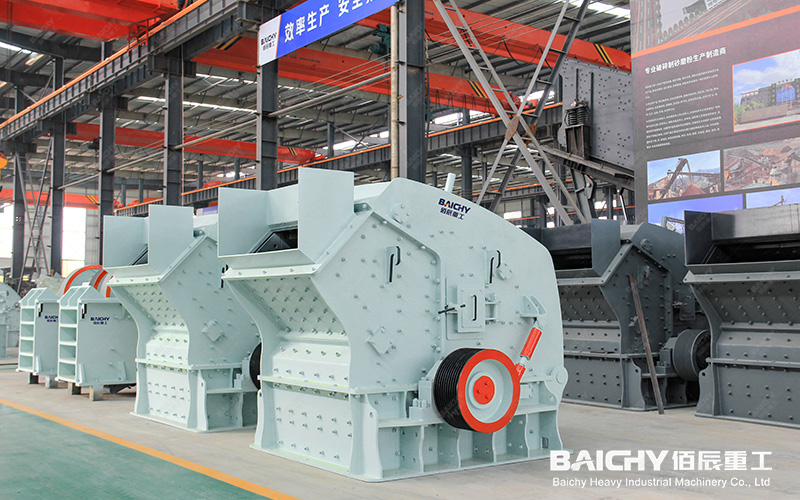
In the field of industrial grinding, materials exhibit a wide variety of properties—some are as hard as stone, some as tough as silk, and some are fragile and brittle. Faced with such complex challenges, why do European-style grinding mills consistently perform exceptionally well, becoming a trusted grinding solution for numerous industries? Their reliability stems from a series of thoughtfully considered and superior design and manufacturing processes.
I. Heavy-Duty Machine Body and Optimized Structure
The reliability of European-style grinding mills is first and foremost built upon their robust physical foundation. Compared to ordinary equipment, they are typically constructed from thickened steel plates, forming a high-strength, heavy-duty machine body structure. This design effectively absorbs and disperses the enormous stress and vibration generated during the grinding process, providing a stable working platform for the equipment. Whether processing hard plastic blocks or metal shavings, the machine body remains stable, fundamentally avoiding component loosening or fatigue damage caused by long-term vibration, ensuring the equipment's long lifespan and continuous stability.
II. High-Power Motor and Precise Transmission
Stable power output is the core of reliable processing of different materials. European-style grinding mills are equipped with high-power, high-torque motors, allowing for effortless start-up and operation even under high loads. With a sophisticated transmission system (such as a heavy-duty reducer), it smoothly and efficiently transmits power to the rotor, ensuring that the blades do not jam or stall when encountering tough or hard materials, thus guaranteeing the continuity of the production process.

III. Modular Blade Design and Superior Materials
The blades are the "warriors" that directly engage with materials and are key to adaptability.
• Material Revolution: Imported high-alloy tool steels (such as SKD-11, D2, etc.) are widely used, undergoing vacuum heat treatment and deep cryogenic treatment, giving the blades extremely high hardness, wear resistance, and impact toughness, significantly extending their service life.
• Modular Design: The blades adopt an independently detachable modular design, which not only facilitates replacement but also allows for rapid adjustment of the gap and combination of moving and fixed blades according to material characteristics (such as brittleness, toughness, and fibrousness), achieving various process requirements such as coarse crushing and fine crushing. This flexibility is the direct reason why it can "do the work of many."
IV. Scientific Chamber and Screen Design
The internal design of the crushing chamber is equally ingenious. The optimized cavity structure creates a powerful airflow circulation, which helps the material distribute evenly within the cavity, preventing localized overheating. It also ensures timely discharge of powder that has reached the required standard, effectively preventing over-grinding and material blockage. Furthermore, easily replaceable screens with different aperture sizes precisely control the output particle size, further broadening the equipment's adaptability to various finished product requirements.
V. Intelligent Electrical Control and Safety Protection
The modern European-style grinding mill integrates an intelligent control system with functions such as overload protection, current monitoring, and automatic reverse anti-jamming. When the equipment detects abnormal loads, it automatically takes corresponding measures to protect core components from damage, while reducing manual intervention and improving the safety and automation of the entire grinding process.
The superior reliability of the European-style grinding mill is not a single advantage, but the result of the synergistic effect of five major systems: robust structure, powerful motor, wear-resistant blades, scientifically designed cavity, and intelligent control. Through top-level industrial design, it perfectly combines power, precision, and adaptability, thus easily handling a wide variety of materials and becoming a reliable cornerstone for improving production efficiency and product quality.









